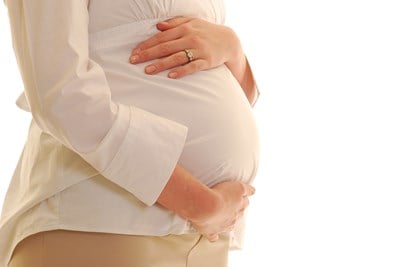Prevent SIDS
According to reported statistics, seven thousand babies die each year from Sudden Infant Death Syndrome or SIDS. This number averages nearly one death per hour every day. While the cause is still unknown, there are many contributing factors that may lead to this unfortunate event. Learn what these factors are and how to do your best to prevent it.
SIDS is a term used to describe the sudden death of an infant after all causes for death have been ruled out. The death must be unexplainable and without any particular cause. This term applies after medical examiners have completed a thorough investigation, an autopsy on the infant and a review of the child's medical history.
All babies are at risk for SIDS. This syndrome does not discriminate against any child. It can affect any race and ethnic background without warning. Parents and Physicians cannot predict whether or not it will happen. In fact, most babies have appeared to be completely healthy prior to their sudden death and not seriously ill.
There are no clinical tests to determine if the infant is at risk. Many cases that were reported indicate the infant was asleep when SIDS occurred. While many people believe it only happens while the infant is sleeping, this isn't always true. Some infants have been known to be wide awake and fully alert when they died.
SIDS causes more deaths each year than in those who die from heart disease, pneumonia, cancer, cystic fibrosis, muscular dystrophy and child abuse combined. While the event often occurs in babies who are less than one year of age, it can happen to children beyond twenty-four months.
Parents should keep in mind that SIDS is not:
- Caused from suffocation
- Painful or cause suffering
- Contagious
- Predictable
- Caused from choking or vomiting
While the cause of SIDS is undetermined, there are a few theories. These include:
- Infection
- Birth defects
- Stress
Although this event is not predictable, there are a few precautions parents can take in order to minimize the chances of SIDS from occurring.
Place Infants to Sleep on Their Backs
According to the American Academy of Pediatrics, infants should always be put to sleep on their backs. Side sleeping should be avoided as well. Those who are put to sleep on their stomach, have a higher rate of SIDS than infants who fall asleep on their back.
Sleeping Arrangements
Never place an infant to sleep in the parent's bed. Couches, chairs and other seating arrangements should not be used as a place for a baby to sleep. Always place an infant in a crib when they are sleeping. If possible, the crib should be placed inside the parent's room near the mother. Studies have shown that infants who are under six months of age are safest when they are near their mothers.
Crib Bedding
Always avoid soft bedding. Nothing should be inside the crib with the baby. Crib bumpers, blankets, stuffed animals, pillows and certain positioning devices are all items that should never be placed inside the crib. Make sure the mattress you have chosen is firm.
Avoid Secondhand Smoke
In 2006 The U.S. Surgeon General's report indicated there is no such thing as a safe level of secondhand smoke, and on average, children come in contact with more secondhand smoke than adults. Infants, who were victims of SIDS, have been known to have higher concentrations of nicotine in their lungs. An infant should not be placed in a car or home when people are smoking.
Avoid Illnesses
An infant should be kept away from individuals who are ill with respiratory infections and gastrointestinal infections. SIDS is often associated with infants who have been ill with these types of infections. Always use caution before allowing others to hold the baby. Make sure proper hand washing is enforced.
Avoid Overdressing the Infant
When dressing the infant for bed, use clothes appropriate for the temperature inside the home. Never overdress the infant. Keep your child warm at night without the use of a blanket. Overheating increases the risk for SIDS.



